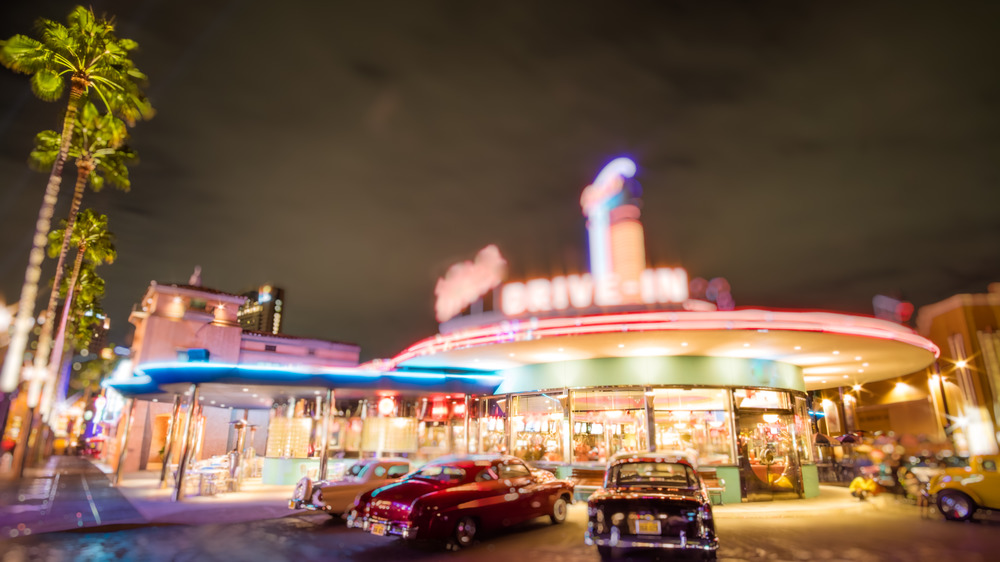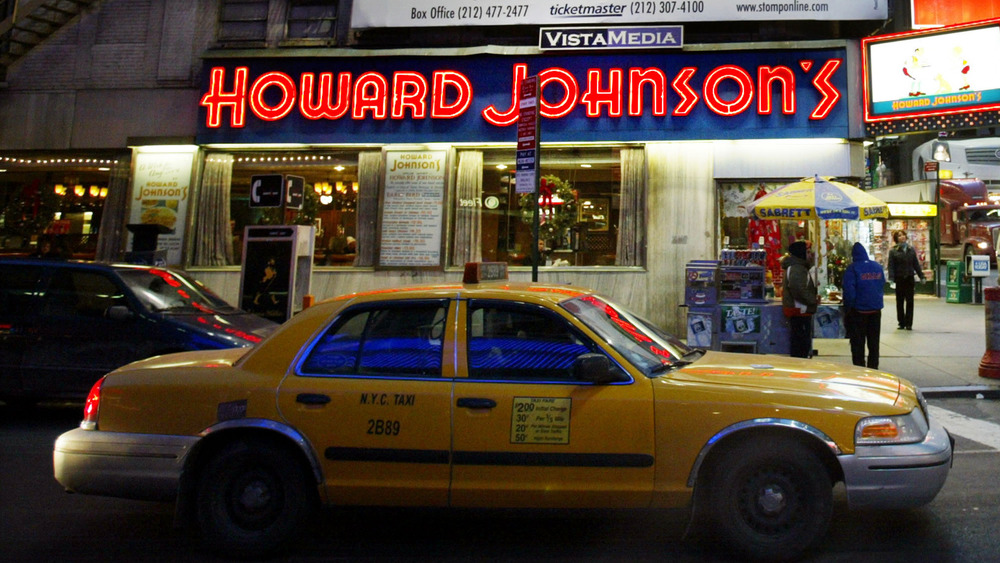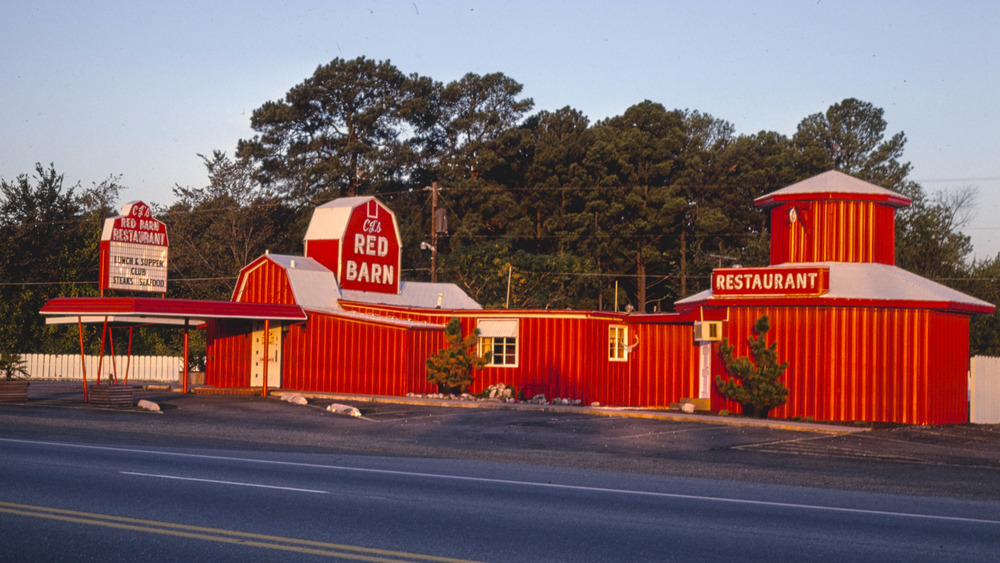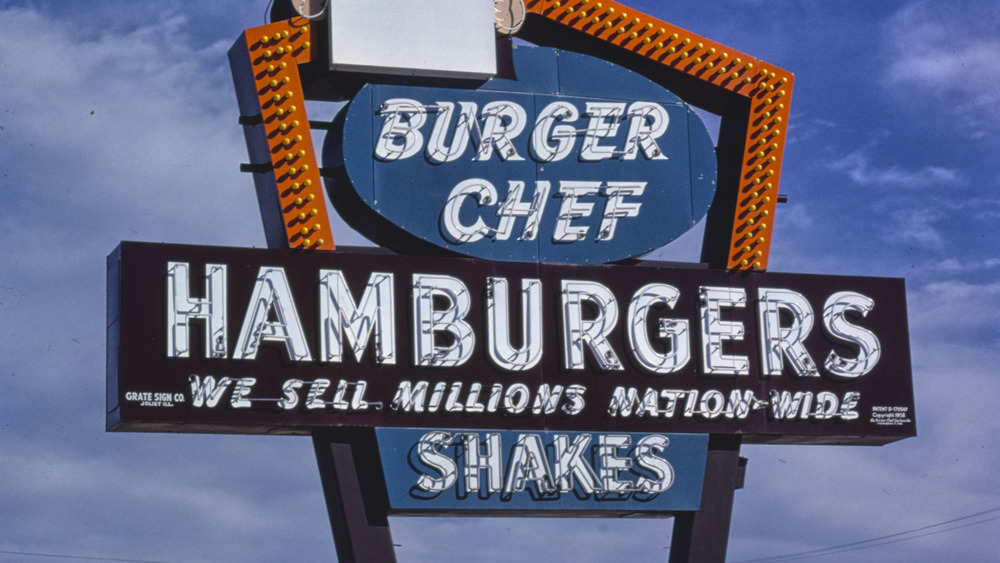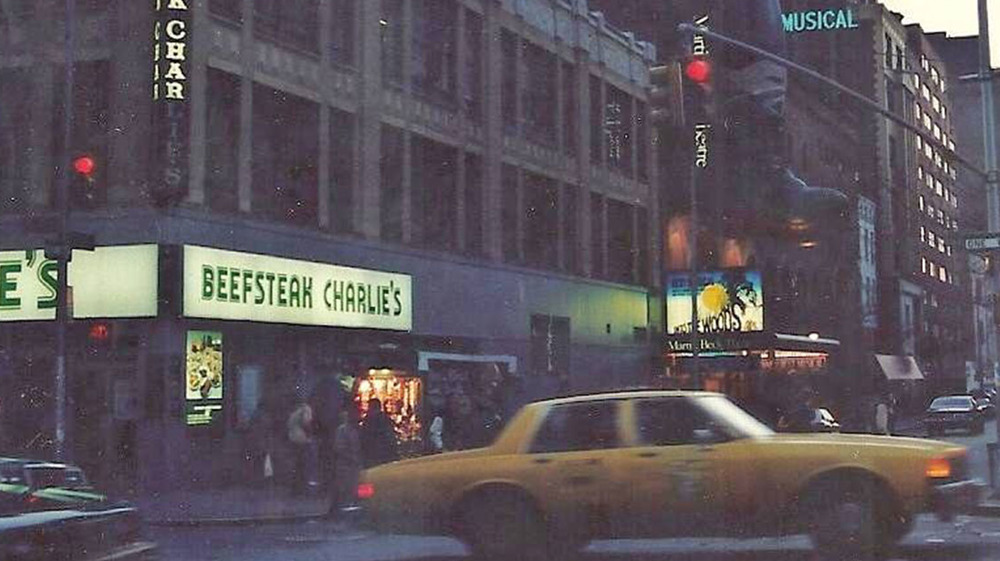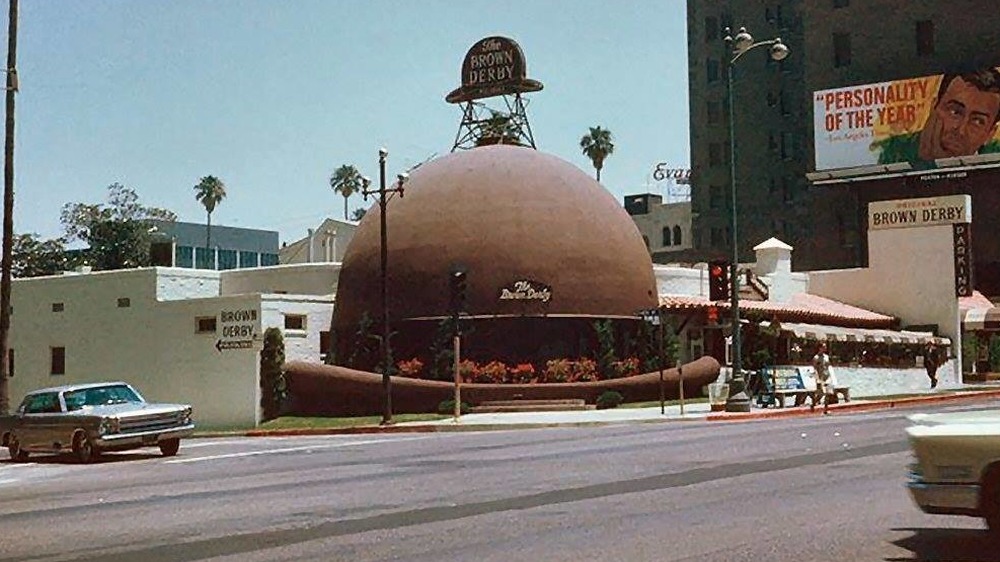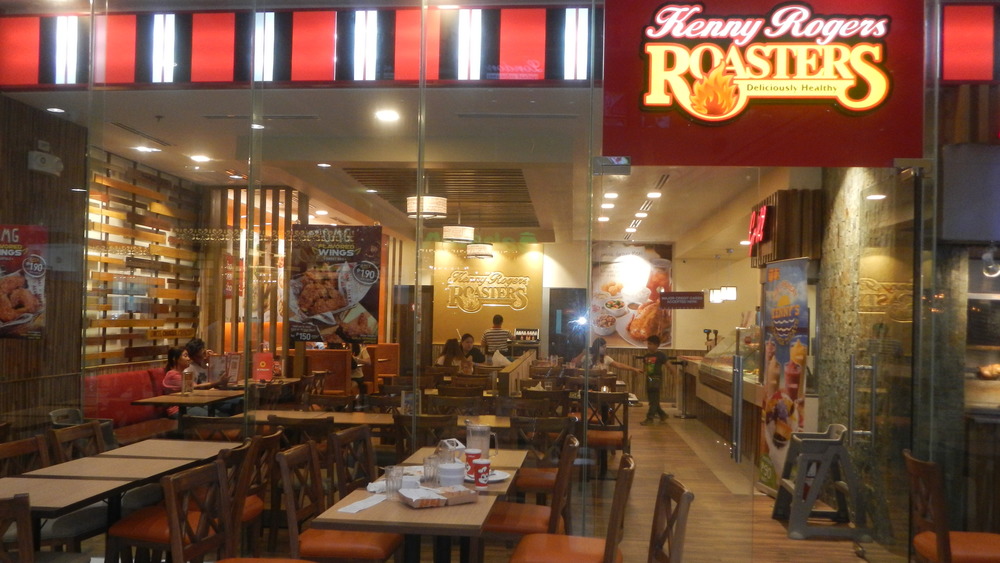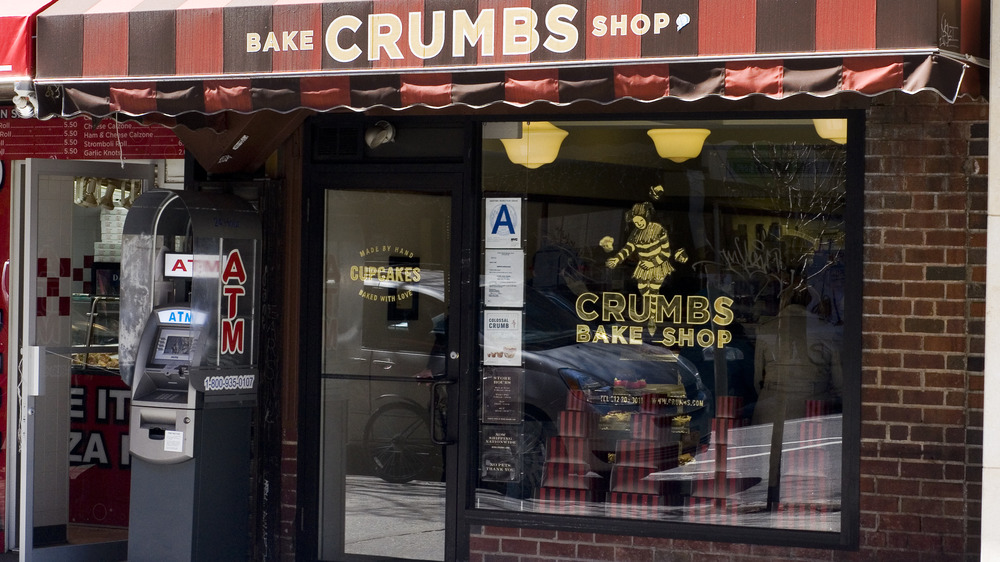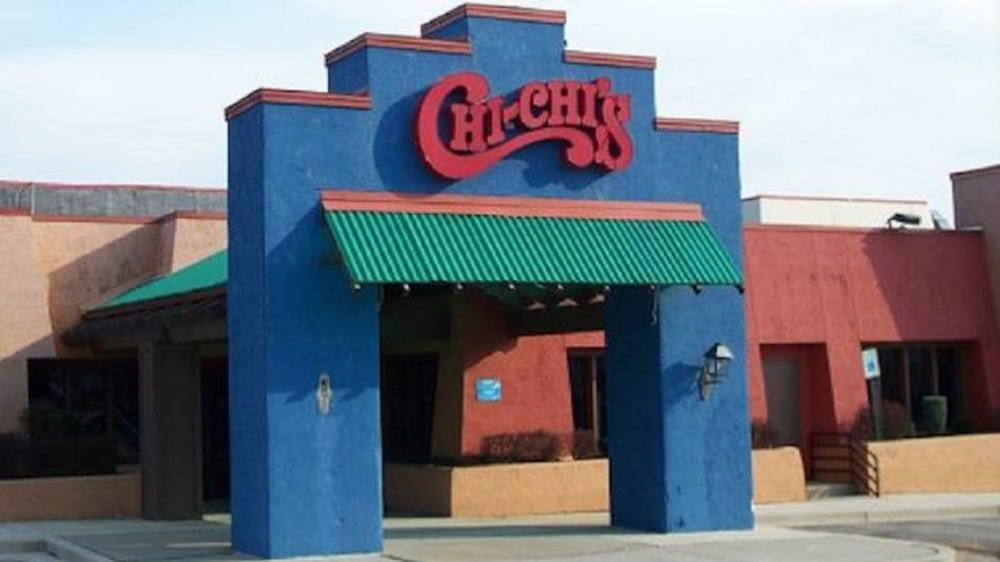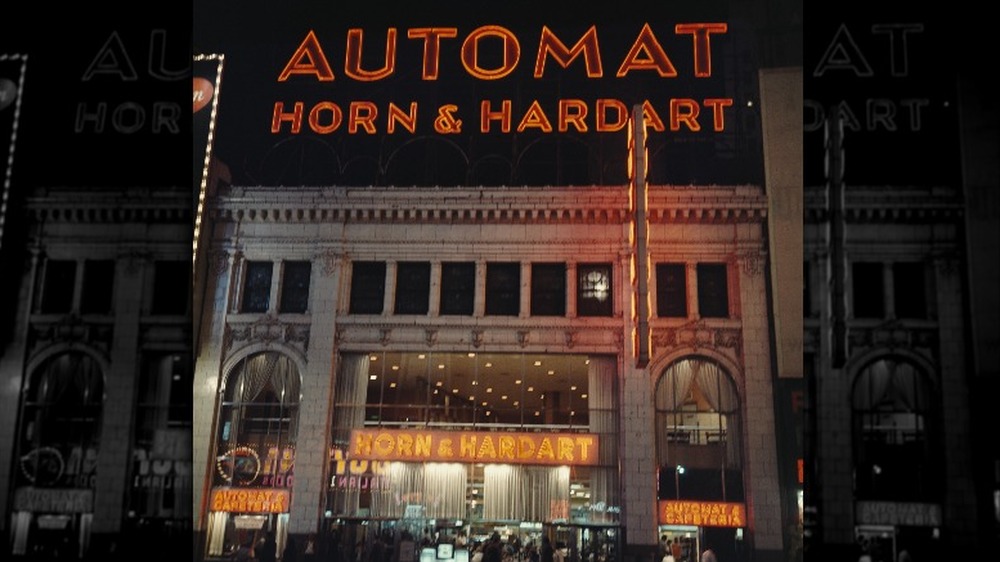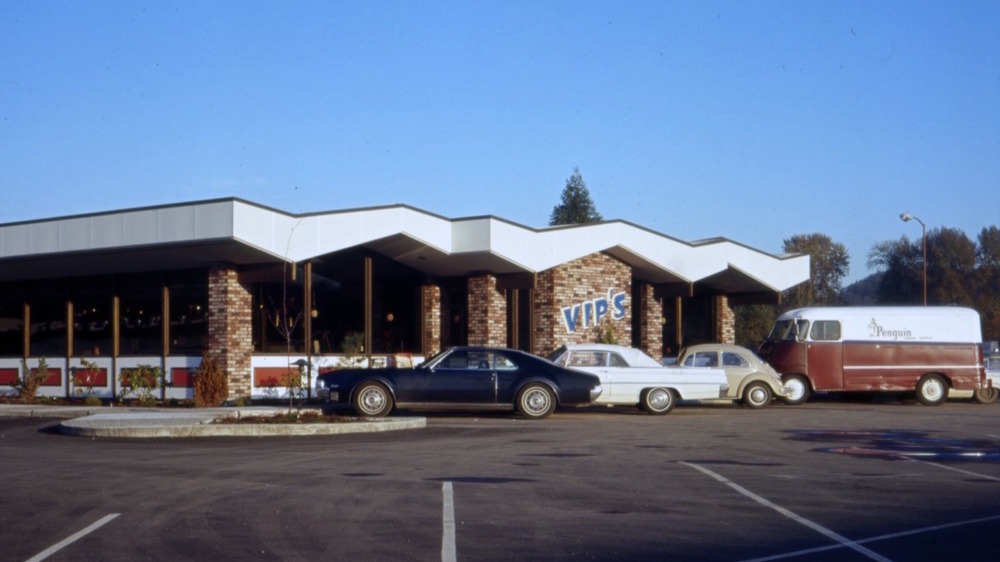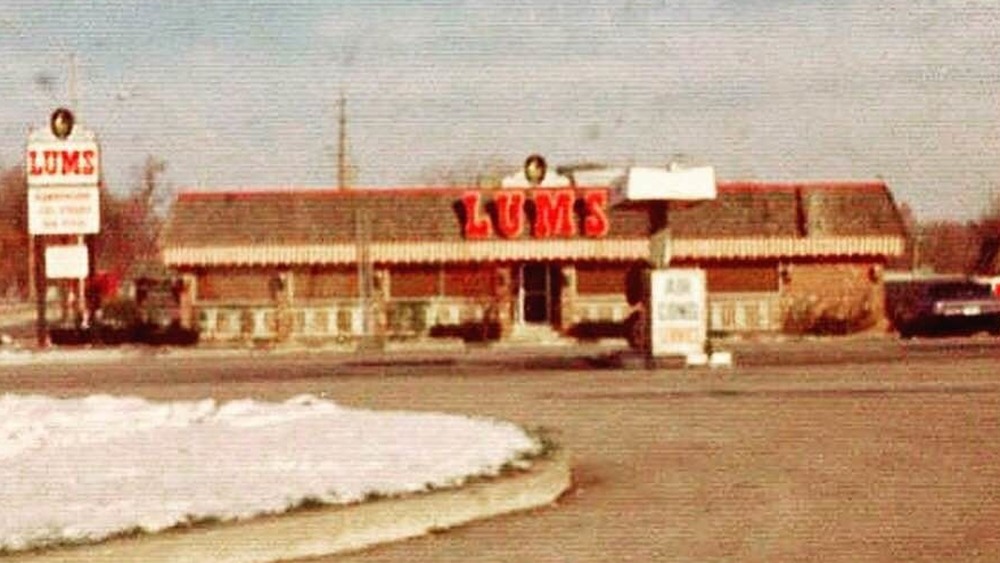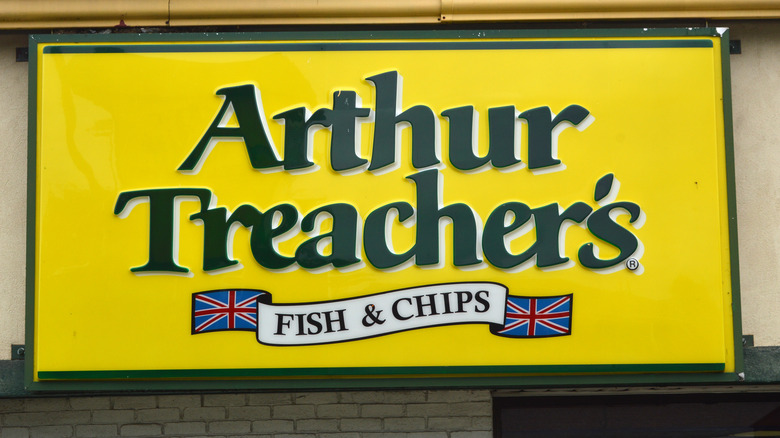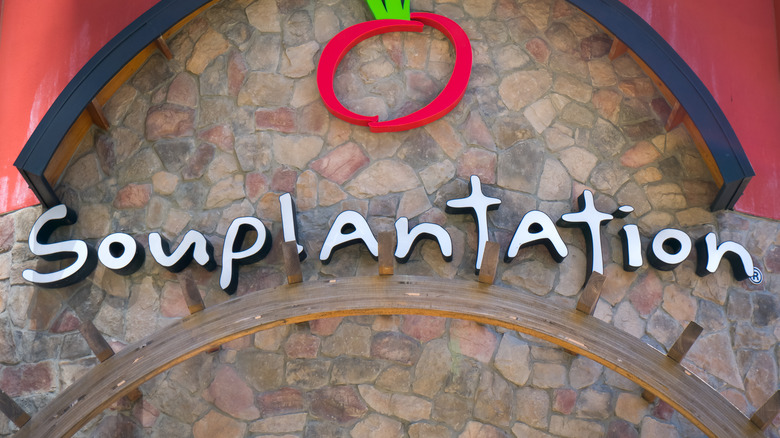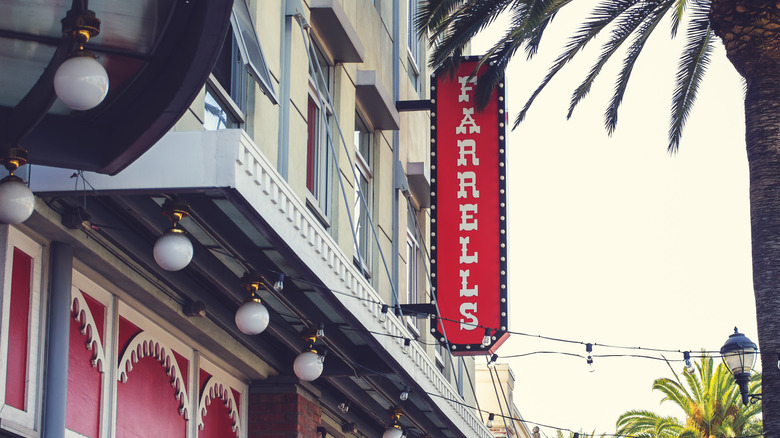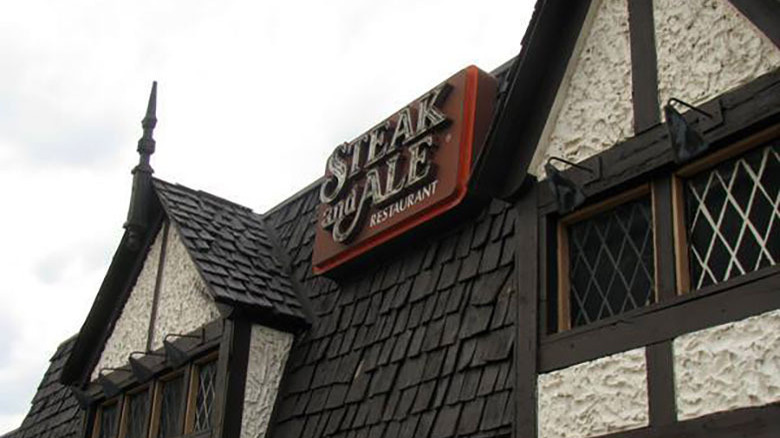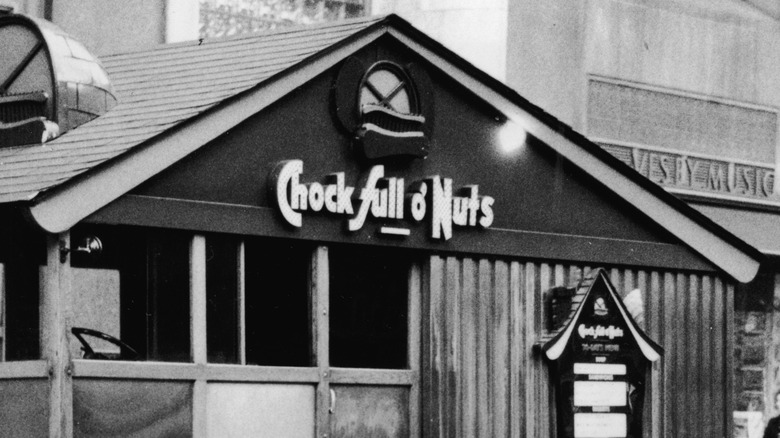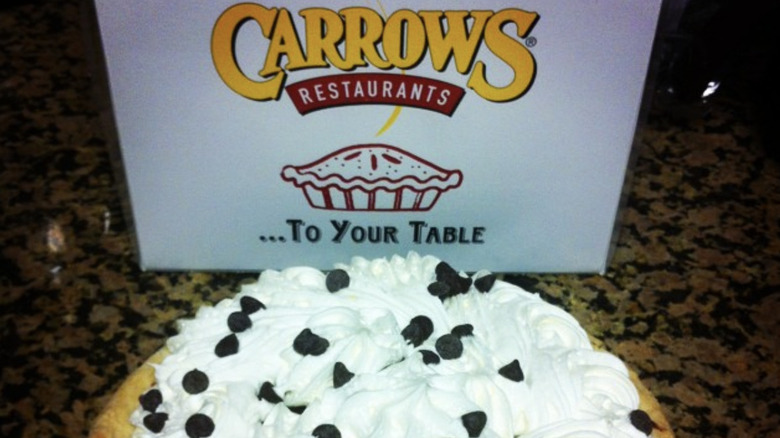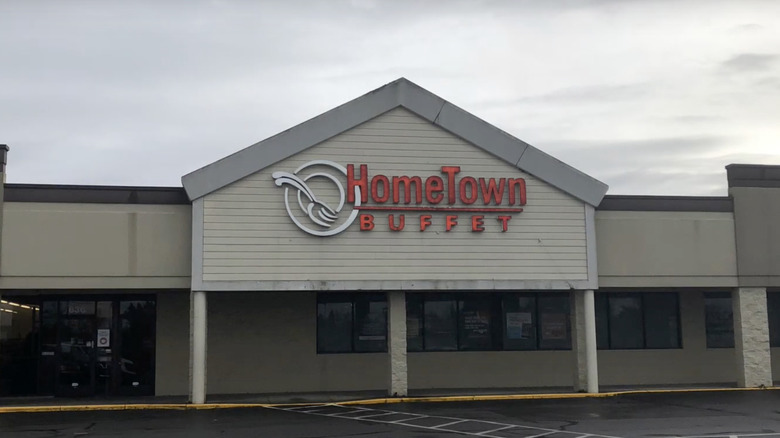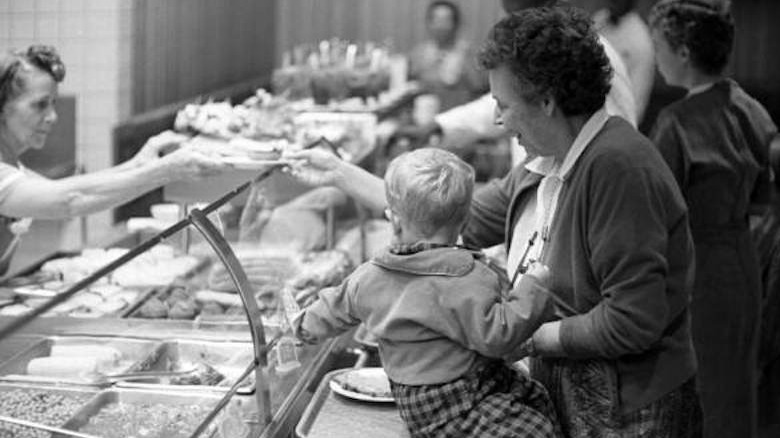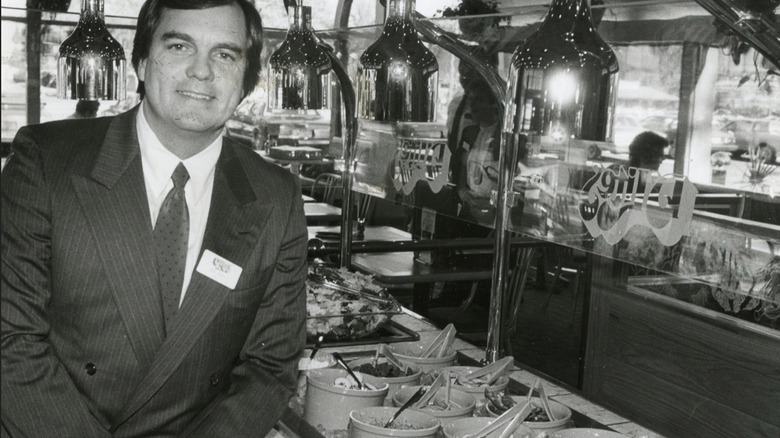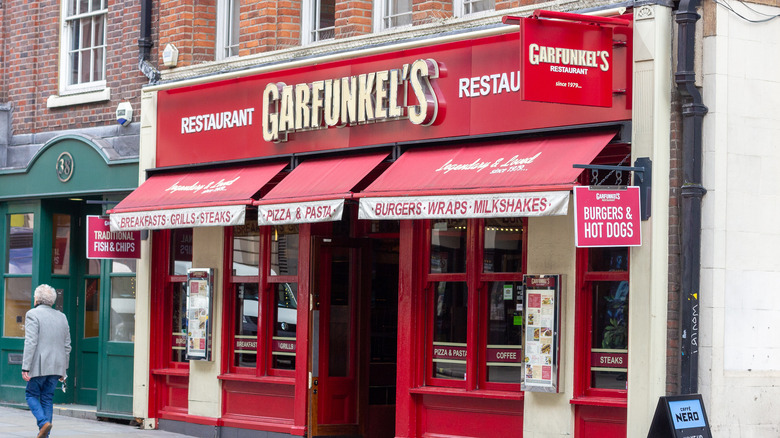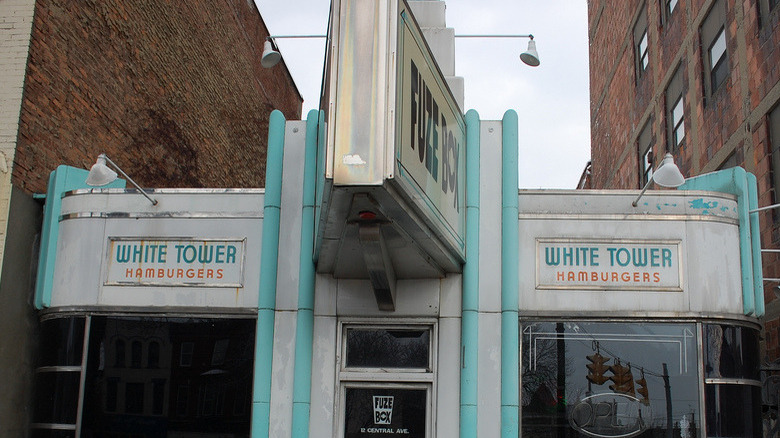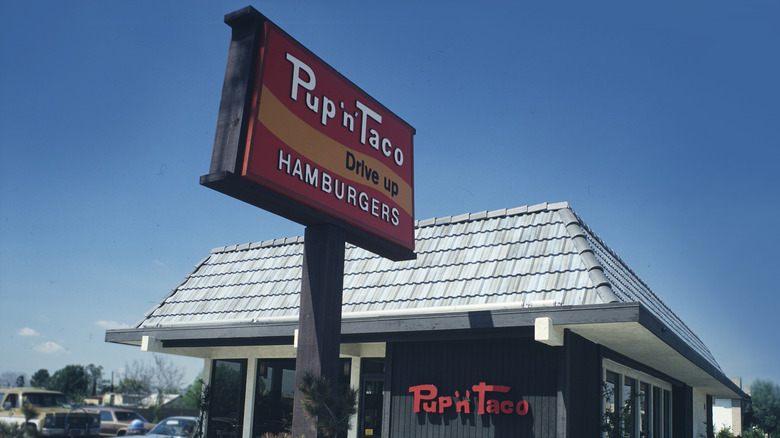23 Beloved Chain Restaurants That Completely Disappeared
Chain restaurants aren't just places where we go to grab a cheap meal—to some of us, they're cherished institutions that are a part of our heritage. A chain spot might be where Mom took you for snacks after school, or the place where your grandparents took you to celebrate birthdays. You and your friends probably hung out at a chain restaurant during your teenage years, or you might have picked up lunch at one while working your first job.
Many of us have a connection with certain chain restaurants thanks to fond memories of time spent within their walls. Chain restaurants have been around for nearly 100 years, since White Castle and A&W Root Beer stands first sprang up in the early 1920s. Today, there are an estimated 88,000-plus chain restaurants in the U.S, IBISWorld reports. But just as in all industries, nothing is forever.
As new chains like Slim Chickens and Torchy's Tacos gain in popularity, popular restaurants like California Pizza Kitchen and Chuck E. Cheese are at risk of fading away. And other once beloved chains have not been able to hang on. Unable to pay their bills, facing dwindling numbers of customers, or perhaps built around a trend that simply grew tired, some of our favorite haunts have now completely disappeared into history.
1. Howard Johnson's
Howard Johnson's, at one point the largest restaurant chain in the U.S., started out as a small soda fountain and newsstand in Quincy, Massachusetts, according to the New England Historical Society. In 1925, the restaurant's owner passed away, leaving his 27-year-old son, Howard Deering Johnson, to take over. Johnson renamed the shop after himself, amped up promotion and, most importantly, revamped the shop's ice cream recipe, infusing it with nearly twice the amount of butterfat as the original formula. Within months, business was booming, with customers standing in line to sample his new-and-improved ice cream line, which eventually grew to include 28 different decadent flavors, including customer favorites like Burgundy Cherry, Buttercrunch, Frozen Pudding, and Peanut Brittle.
Johnson opened a few more locations on his own and then, realizing just what a success he was sitting on, partnered with a local businessman to expand even further, creating one of the first modern-day restaurant franchises (which eventually even grew to include motor lodges for travellers), according to The Economist.
Sadly, that expansion also set the chain up for incredible failure in the mid-1970s, when the U.S. energy crisis hit. Gas prices soared and travel plummeted, slashing into the company's profits. HoJo's couldn't compete with new menus and cheaper prices, while emerging chains like McDonald's remained more popular with younger consumers. Today, Howard Johnson hotels are still around, but those iconic orange topped restaurants and their butterfat-packed ice creams are little more than a distant memory.
2. Red Barn
"When the hungries hit...hit the Red Barn!" That was the earworm jingle for the popular Red Barn chain of restaurants, which was founded by a trio of restaurateurs in Springfield, Ohio in 1961. Never known for subtlety, Red Barn was a group of country-themed fast food joints that were shaped like barns and painted bright red.
Despite the rustic exterior, Red Barn was known for being ahead of its time when it came to the food it served. Gigantic gourmet burgers known as the "Big Barney" and the "Barnbuster" were similar to the Big Mac and Whopper of later years. The Red Barn's menu also included breaded and fried Atlantic cod, and deep-fried chicken made in a Henny Penny fryer, the same commercial fryer first used in KFC by Colonel Sanders, PENNLive reports. Red Barn was also the first chain to let customers have salad their way, with a massive self-service salad bar filled with countless salad fixings and every type of salad imaginable.
At its peak, there were between 300 and 400 Red Barn restaurants dotted across America, according to Red Barn history site BarnBuster. But as tastes in the country changed, business slowed and the chain was sold several times, including to the owners of the roadside travel hub Motel 6 in the late 70s. Despite revamped menus and an attempt to modernize, the chain was never able to fully return to its glory days and all Red Barn operations ceased in 1988.
3. Burger Chef
Although the name Burger Chef may only sound familiar today to fans of AMC's "Mad Men," there was a time when it was one of the biggest fast food chains in America, with more than 1,200 locations across the country (second only to McDonald's at the time).
Throughout its history, Burger Chef was considered an industry innovator. It was founded by brothers Frank and Donald Thomas in 1954, according to John S. Flack, Jr., Burger Chef superfan and unofficial historian. Prior to its launch, the duo had already made burger history: The brothers helped develop the flame broiler, which enabled Burger Chef to pump out 800 burgers per hour, a higher rate than that of McDonald's at the time, according to MeTV.
Under the Thomas' leadership, Burger Chef was the first fast food company to market the burger-fries-and-drink combo meal, dubbed the "Triple Threat," which sold for just 45 cents, according to The Indianapolis Star. They also introduced the first "Fun Meal" for kids, with mascots like Burger Chef and Chef Yo-Yo—and even partnered with Star Wars for a historic promotion, offering cardboard droid "puppets." McDonald's Happy Meals appeared soon after and Burger Chef sued, forcing McDonald's to settle out of court for trademark infringement.
Sadly, as big as Burger Chef was, it couldn't withstand emerging competition from upstarts like Wendy's. In 1981, Hardee's scooped up Burger Chef for $44 million. The remaining locations were all converted into Hardee's, and Burger Chef said goodbye for good.
4. Beefsteak Charlie's
Considering its all-you-can-eat salad bar; unlimited beer, wine, and sangria; and massive portions of hamburgers, steaks, ribs and chicken—all available at ridiculously low prices—it's easy to see why Beefsteak Charlie's was a restaurant lover's dream in the 1970's and 80s.
Born in NYC, the first Beefsteak Charlie's was a popular sports bar that opened way back in 1910, according to The Daily Meal. After the success of the original restaurant and realizing the name had never been officially trademarked, restaurateur Larry Ellman legally renamed his "Steak & Brew" chain Beefsteak Charlie's in 1976. By 1984, there were more than 60 Beefsteak Charlie's up and down the East Coast, all of which epitomized the chain's slogan: "I'll feed you like there's no tomorrow."
In a 1982 review of Beefsteak Charlie's, the Washington Post reported just what drew consumers to the place: "Exercising no restraint whatever," the WaPo reviewer wrote, "we polished off seven heaping plates of 'shrimp cocktail' from the salad bar, three salads, two orders of barbecued chicken, one sirloin steak Mediterranean with garlic sauce, three pitchers of soft drink, one baked potato, two orders of potato chips, and two dishes of ice cream—for a grand total of $12.49 (plus a $3 tip)."
Unfortunately, that opportunity for self-indulgence wouldn't last. In 1987, the chain sold to Bombay Palace Restaurants, which filed for bankruptcy just two years later, The Daily Meal reports. And by the early 2000s, all the Beefsteak Charlie's restaurants that remained had shuttered.
5. Brown Derby
As L.A. landmarks go, few spots can compare with the famed Brown Derby, the large brown hat-shaped restaurant that opened for business in 1926. Designed to be iconic (hence its distinctive shape), the restaurant and its three additional locations, which followed quickly, became a playground for Hollywood royalty, wannabes and ordinary folks looking to shine for a moment among the stars, Finding Lost Angeles reports. Actors like Groucho Marx, Rita Hayworth, and Clark Gable were all regulars and were also featured in the collection of celebrity caricatures that famously lined the restaurant's walls.
And the Brow Derby's food was incredible—the Cobb salad was founded there and was named after owner Robert Howard Cob, according to the The New York Times. The restaurant also claimed to be the home of the original Shirley Temple drink, and its namesake seems to agree.
Regrettably, the glitz and glam of the Brown Derby empire faded over time. In 1980, the first Derby location fell, taken down by disputes over building repairs and incredible hikes in rent, Finding Los Angeles reports. Within five years, the remaining locations had closed as well, according to the Hollywood Reporter. Today, people looking to catch a bit of the Brown Derby legacy are left with memorabilia in museums or the Brown Derby tribute at Disney's Hollywood Studios in Orlando. But nothing compares to the fabled original chain and its ties to classic Hollywood lore.
6. Kenny Rogers Roasters
It's fairly common for country music stars to expand their brands by brancing into new areas like food and drink. Iconic singer Minnie Pearl, who was just as famous for the price tags on her hats as for her singing, was one of the first to start the trend with her own fried chicken shop in 1969, Franchise Times reports. Since then Dolly Parton has opened her own Dixie Stampede, which serves nightly feasts in Branson, Missouri and Pigeon Forge, Tennessee. And in 1991, "The Gambler" himself, Kenny Rogers, teamed up with a former KFC CEO to open his own rotisserie chicken business. Kenny Rogers Roasters began in Coral Springs, Florida and quickly expanded to include more than 350 restaurants.
Although it started strong, the chain faced stiff competition from the likes of KFC, Popeyes, and Boston Chicken (now known as Boston Market). In 1992, another chicken chain called Clucker's sued Kenny Rogers Roasters, claiming the restaurant had copied its "wood-roasted chicken" concept. Instead of settling, Kenny Rogers did what any self-respecting country music legend would do: he bought a majority stake in the Cluckers company!
In 1998, Kenny Roger Roasters filed for bankruptcy and was bought by hot dog giant, Nathan's Famous Inc. for $1.25 million. A decade later, they too sold the chain, this time to a franchisee based in Asia. Although it's vanished from the American fast food scene, the chain is still thriving in Indonesia, the Philippines, and Dubai. Kenny would be proud.
7. Crumbs Bake Shop
Crumbs Bake Shop got its start in 2003 as a small mom-and-pop style bakery located in Manhattan's Upper West Side. Driven by a booming "Sex and the City"-inspired cupcake trend at the time, the bakery was an immediate success and grew to a remarkable 70 stores in 10 states within a decade. For a time, customers couldn't get enough of the giant, sugary, candy topped cupcakes that came in decadent flavors such as Milkshake, Peanut Butter Cup, Cotton Candy, and strawberry pink "Cosmo."
But much has been written about what Crumbs Bake Shop did wrong, and what led to the downfall of the once beloved chain. According to the Washington Post, the company expanded far too quickly at a time when profits within single shops were already starting to decline. While individual shops were once making more than $1.2 million per location in 2009, by 2013 Crumbs Bake Shop was in the red, losing more than $18 million. Combine these losses with a cupcake fad that was also losing steam, plus vast competition from countless other restaurants and chains that also amped up their cupcake production, the chain was sadly doomed for failure.
In the summer of 2014, all Crumbs Bake Shops were closed and the company filed for bankruptcy. The chain was sold to TV entrepreneur Marcus Lemonis, who revamped the business and tried to bring it back, but those efforts failed as well. In 2017, all remaining Crumbs locations sadly closed for good.
8. Chi-Chi's
For many, Chi-Chi's was the first place they ever got a taste of a chimichanga. Chi-Chi's was also the restaurant responsible for putting fried ice cream on the menus of Mexican restaurants across the U.S. For a while in the late 1980's and early 1990's, this restaurant giant was the epitome of sit-down casual Tex-mex dining.
Founded in Minneapolis in 1977 by restaurateur and former Green Bay Packers star Marno McDermott, whose wife went by the nickname "Chi-Chi," the company was designed to impart "a celebration of food." The marketing worked and by 1986, the chain had exploded to more than 200 different locations across the U.S.
As with all the most popular brands, competition gradually weakened the Chi-Chi's brand. By the end of the 90s, just 150 locations remained. Desperate for financing, the struggling chain filed for bankruptcy in 2002. And then, just a month after the filing, disaster hit. Green onions imported from Mexico that were tainted with the hepatitis A virus were served at a Chi-Chi's near Pittsburgh. The outbreak, which caused a massive media stir, sickened more than 650 people and killed four. Customers left the chain in droves and sales plummeted, causing the remaining restaurants to eventually close as well.
Chi-Chi's restaurants still exist today in Europe, Kuwait and the United Arab Emirates. But the only place you'll find Chi-Chi's in America is in the grocery store, where Chi-Chi's-branded products remain on the shelves.
9. Horn & Hardart
Horn & Hardart isn't just a restaurant chain that has completely disappeared—it's a restaurant concept that's almost extinct in the U.S.: the automat.
Developed in Berlin in 1895, an automat is a type of fast food restaurant where all the foods for sale are served through vending machines with virtually no human contact. In their day, automats were conceived as a quick, easy, and reliable way to get a tasty meal and items like prepared sandwiches, salads, pies, and cakes were displayed behind tiny glass doors. If you saw something you wanted, you simply dropped in some coins and a door would open to provide a dish to take and enjoy.
Horn & Hardart was the undisputed king of automat restaurants. The chain began in Philadelphia in 1902 and during its golden years from 1920 through 1950, it expanded to more than 180 locations, primarily in New York and Philadelphia, according to Entrepreneur. The chain's most popular menu items included Salisbury steak, huckleberry pie, and freshly brewed coffee.
Sadly, fast food took a toll on the automat tradition during the 1960s and 70s, causing many Horn & Hardart locations to close. The chain held on as long as it could until its final location, on 42nd Street and Third Avenue in New York City, going under in 1991. Today you can still buy Horn & Hardart coffee, but it's only available online — and you have to brew and serve it yourself.
10. VIP's
Similar to a modern day Denny's or other late-night diner, VIP's was one of the first 24-hour restaurant chains in the U.S.. The locations, which were usually near a major interstate, featured a delicious blend of breakfast, lunch, and dinner classics. Customers could order char-broiled burgers, bar-b-que sandwiches, homemade soups, entrees like hickory smoked ham steak or clam strips, or eggs, pancakes, and French toast.
At its peak, VIP's had more than 50 locations, making it one of the largest restaurant chains ever based in the Northeast. The first VIP's opened in 1968, near the tiny town of Tualatin. Additional shops then quickly sprung up around the state, in cities such as Salem and Seattle, before eventually sweeping throughout neighboring Washington, Nevada, and Northern California.
Proud of its local heritage, the restaurant proclaimed: "Look for us and we'll look for you," offering free maps to tourists visiting the area and telling customers to ask their waitress about local "must-see" points of interest.
Despite VIP's success, according to PastFactory, when the owners of Denny's offered to buy 35 of the chain's restaurants in 1982, its owners saw the offer as "too good to pass up" and agreed to the sale, on the condition that current VIP's employees would get to keep their jobs. Following that sale, more locations were sold in 1984 and 1989, bringing the VIP's story to an end once and for all.
11. Lum's
Restaurant goers who were lucky enough to have sampled the Lum's menu while it was available often debate over what was better: Lum's famous hot dog, which was steamed in beer and paired with a sherry-infused sauerkraut, or the OllieBurger, which contained a hamburger patty packed with a top secret blend of 32 spices. For the record, both camps are right: The Florida-based fast food chain was home to some of the most unique food ever served in a casual restaurant setting.
Lum's was started by brothers Stuart and Clifford Perlman in Miami Beach in 1956. By 1961, they'd expanded to four restaurants. That number had grown to more than 450 locations at the height of Lum's popularity, MeTV reports. Business was so good that in 1969 the brothers were able to purchase Caesars Palace Las Vegas for $60 million. Two years later, they sold the chain to John Y. Brown, the former chairman of KFC and then owner of the NBA's Buffalo Braves. It was Brown who brought the Ollieburger to Lum's, having bought the secret recipe from Miami Beach sandwich shop operator Ollie Gleichenhaus. The price? A then industry-rattling $1 million!
Lum's is also famous for having TV pioneer Milton Berle as its spokesperson, but even "Uncle Miltie" couldn't save the chain from filing for bankruptcy and closing most of its locations in 1983. The last remaining Lum's, which was in Bellevue, Nebraska, closed in 2017 after 49 years in the business. But those who want to try a taste of burger history need not fear: the Ollieburger is still available at Ollie's Trolley, a Lum's spinoff with two locations left in Cincinatti, Ohio and Louisville, Kentucky.
12. Arthur Treacher's Fish and Chips
In 1969, three fried fish chains all opened for business in the United States: Long John Silver's, Captain D's, and Arthur Treacher's Fish & Chips. A quintessentially English combination of fried whitefish (usually cod, pollock, haddock, or halibut) and chips (French fries), it had been an omnipresent fast food in Great Britain for decades. Arthur Treacher's presentation was decidedly more British than its competitors because of its heavy use of malt vinegar and the involvement of its namesake, Arthur Treacher, the sidekick on the popular "The Merv Griffin Show" and a well-known character actor his many roles as a stuffy English butler.
Arthur Treacher's aggressively expanded in the 1970s, branching out from its Columbus, Ohio, beginnings to a chain of 826 restaurants by decade's end, according to Kiplinger. According to the Lakeland Ledger, there were way more Arthur Treacher's than the customer base merited, and parent company Orange-co sold the chain to frozen fish processor Mrs. Paul's Kitchen in 1979, which sold it to Lumara Foods three years later (per the York Daily Record). Following a Chapter 11 bankruptcy filing in 1984 (according to Columbus Business First), the network shrunk to just 27 outlets by 2010. By 2021, there was only a single freestanding Arthur Treacher's Fish & Chips left, in Cuyahoga Falls, Ohio, not far from where the chain began in Columbus.
13. Souplantation and Sweet Tomatoes
Plenty of all-you-can-eat, buffet-style restaurants have carved out a niche, like Old Country Buffet, Golden Corral, and Sizzler, but Souplantation sold something different than endless plates of rich and hearty comfort food and fast-food favorites like fried chicken and mashed potatoes. Souplantation, or Sweet Tomatoes, as it was known outside of its birthplace of California, pitched itself as a healthy restaurant, offering a super-sized salad bar with dozens of leafy greens and appropriate toppings, along with soups and baked goods. An outgrowth of the California-based health food craze of the 1970s, the first Souplantation opened in San Diego in 1978 (per the Los Angeles Times) and expanded across the nation in the 1980s and beyond.
In the wake of lockdown measures meant to slow or stop the spread of the coronavirus in March 2020, Sweet Tomatoes and Souplantation closed down, according to the San Diego Union-Tribune. While many other restaurants moved to a takeout-only operational model, that proved difficult for a buffet-style business. What was only supposed to be a temporary shutdown became permanent just two months later. In May 2020, after losing $1 million a week since closing down, according to Oregon Live, parent company Garden Fresh shut down all 97 remaining locations of both Sweet Tomatoes and Souplantation, which never opened up again.
14. Farrell's
For nearly four decades, countless kids growing up on the West Coast of the United States and Hawaii must have felt pretty special and lucky if they got to have their birthday party at Farrell's Ice Cream Parlour. Not only did guests receive a free ice cream sundae on their birthday, but the whole place had a nonstop party vibe, flavored with a turn-of-the-20th century sensibility, with staff in 1890s stripes and boater hats running around serving banana splits and gigantic ice cream mountains as a player piano loudly churned out ragtime and old-timey tunes.
After starting out in Portland, Oregon in 1963, there were 130 Farrell's locations in all by the mid-1970s, shortly after the chain was acquired by the Marriott Corporation. By the early '80s, Farrell's had been sold to an investor group and by 1990 only a few were left, as the novelty of an 1890s ice cream parlor wore off, coupled with increased competition from other ice cream and frozen yogurt chains. In 2019, the last Farrell's, in Brea, California, closed down (per the OC Register) bringing the long history of the historical chain to a close.
15. Steak and Ale
Launched in Dallas in the mid-1960s, Steak and Ale defined mid-century suburban, sit-down dining. Appearing on the restaurant scene when steaks were perceived as a rare treat for the rich and fancy, Steak and Ale brought steakhouse fare and vibes to the masses at affordable prices in comfortable, old English-inspired dining rooms (per the Wall Street Journal). The chain also helped popularize such now-standard restaurant practices as dinner items on sale at lunch for less money, an all-you-can-eat salad bar, and free soda refills (alongside its menu of steaks, chicken, and pasta dishes, and a large selection of wine and beer) according to AmericaJR. As of the mid-1980s, and under the ownership of Pillsbury's restaurant group for several years, 280 Steak and Ale outlets were the setting for hundreds of thousands of celebrations and date nights.
Steak and Ale was ultimately crowded out of the casual dining sector it helped popularize. In 2008, then-owner Metromedia Restaurant Group, filed for bankruptcy, according to CNN. Every Steak and Ale immediately and permanently closed down, as did all of Metromedia's company-owned Bennigan's outlets. Franchise-operated locations of the latter stayed open, however, and 10 years later, the remaining ones offered fans of the original Steak and Ale the chance to experience some of their favorites again, according to Nation's Restaurant News. Three items from Steak and Ale debuted on the Bennigan's menu in 2018: the Kensington Club (an eight-ounce sirloin topped with a proprietary glaze); cheese, bacon, and wined mushroom-topped Smothered Chicken; and pineapple-heavy Hawaiian Chicken.
16. Chock Full O' Nuts
Coffee isn't a nut, so the name of canned ground coffee Chock full o'Nuts is a little confusing. However, the company started out in 1926 as a store on Broadway in New York City that sold nuts. Six years later, after the Great Depression rendered nuts an expensive indulgence, founder William Black converted what had grown into a collection of 18 nut stores into some combination of coffee stand, lunch counter, and low-cost convenience store, dispensing a cup of hot brewed coffee and a "nutted cheese" sandwich (per Politico) — cream cheese and chopped nuts on raisin bread — for a grand total of five cents.
Chock full O'Nuts weathered the Depression by offering cheap food and cheap coffee, which was so popular that Black started to sell it in grocery stores in the early 1950s. It was a major brand well into the '80s; by the time Black died in 1983, according to the New York Times, the company touted an annual revenue of $115.8 million, with 80 percent of that coming from grocery store coffee. The rest, all came from 25 Chock full O'Nuts coffee-and-sandwich cafes still extant in Manhattan and Brooklyn. Those all shut down by the end of the 1980s, however.
In 2010, per the New York Times, the Chock full O'Nuts restaurant concept was revived as a food stand catering to nostalgic New Yorkers. As of 2021, five are open, including one at an upstate New York hospital and one at a mall in New Jersey.
17. Carrows
In the latter 20th century and beyond, family-style diners with menus selling big breakfasts, burgers, and sandwiches — as well as towering pies by the slice or by the whole — were a big deal in the western United States. Along with chains like Marie Callender's and Shari's, Carrows consistently attracted customers seeking familiar foods in an unpretentious environment. Founded in California in 1970 as Carrows Hickory Chip Restaurant, in 1996 the company (along with similar diner-and-pie chain Coco's Bakery) sold to Flagstar, which at the time controlled competitor Denny's. By the time Carrows was sold again in 2015, only 50 outlets remained, all in California, Arizona, and Nevada.
In 2018, competitor Shari's Cafe & Pies bought out what remained of the Carrows operation and continued to do business under the well-established brand name. The new owners left just one Carrows open — the original location in Cerritos, California — but that closed for good in 2023.
18. HomeTown Buffet
There's something about a buffet that's irresistible — or rather, a whole lot of things. The mountains of food under heat lamps are constantly replenished. Customers can have as much of the homestyle favorites, fried foods, salads, sides, and desserts as they'd like, and all of it for one reasonable price. Buffets like Old Country Buffet and HomeTown Buffet once dominated the scene, with hundreds of each operating out of huge restaurant spaces with dozens of items ready to go at any given moment.
Following some mergers and corporate realignment, Fresh Acquisitions LLC and Buffets LLC wound up controlling a large chunk of the American buffet restaurant market. COVID-19 restrictions designed to slow the spread of the coronavirus hit communal-oriented restaurants, like buffets, especially hard. Not really able to subsist on takeout like other eateries, most buffets stayed closed for long stretches in 2020, and when they reopened, operators found they'd lost too many months of revenue. In 2021, the buffet chains' parent operation filed for bankruptcy, resulting in the demise and closure of Old Country Buffet and HomeTown Buffet.
19. Morrison's
A midway point between fast food and serve-yourself buffets is the casual cafeteria. Most predominant in the South, the modern cafeteria concept — walk through a line and pick out a meal from hot and cold ready-to-eat selections — originated with the first Morrison's, which opened in Mobile, Alabama in 1920. With full meals of Southern-style home-cooking (a meat, sides, and bread) costing about 30 cents, far less than traditional sit-down restaurants at the time, Morrison's was a hit, and within a week of opening, more than 1,000 customers dined there daily.
Uniquely suited to enduring the Great Depression because it cost so little to eat there, Morrison's grew into a chain of 17 cafeterias around the South by the early 1950s. After merging with the Ruby Tuesday's restaurant chain, Morrison's itself grew to a string of 142 outlets. In 1998, the first name in cafeterias started to disappear when competitor Piccadilly Cafeterias purchased the entirety of the since-renamed Morrison Restaurants for $46 million. Piccadilly filed for bankruptcy in 2012, and by 2018 the only Morrison's left was one in the company's hometown of Mobile, Alabama.
20. D'Lites of America
In 1981, an ex-gym owner and multi-unit Wendy's franchisee named Doug Sheley thought he could bank on both an ongoing health craze and a national love of fast food by combining both of his interests. Sheley launched D'Lites of America as a more nutritious, or at least less unhealthy, fast food chain. D'Lites' menu offered familiar fast food items, including burgers, fries, fish sandwiches, chicken sandwiches, as well as baked potato and a salad bar. All of it purported to contain far fewer calories than the other fast food places thanks to small but significant changes like wheat buns instead of white, reduced-calorie mayonnaise and cheese, and leaner blends of ground beef.
Sheley and D'Lites struck on something big at first, as fast food fans looking to cut back on unhealthy fare flocked to D'Lites for its less caloric burgers, salads with low-fat dressing, soups, light beer and reduced-calorie wine, and vegetarian pita sandwich. Upwards of 100 D'Lites outlets had opened up around the U.S. by 1985. Then the novelty wore off, and D'Lites tanked. After filing for bankruptcy, what remained of the D'Lites was absorbed into the full-calorie, full-fat Hardee's.
21. Garfunkel's
For hundreds of years in England, the predominant way to grab a quick snack or easy meal on the cheap was to pop into one of the country's many pubs. In the 1970s, U.K. entrepreneur Philip Kaye helped popularize American-style mid-level chain dining in the U.K., opening Deep Pan Pizza, Golden Egg, and Garfunkel's. Over time, Garfunkel's took on an extremely British theme, with shelves stacked with distinctive British products. The menu was vast and crowd-pleasing, American-style diner fare, including pasta, pizza, hamburgers, fish and chips, onion rings, and rotisserie chicken.
As recently as 2019, a dozen Garfunkel's could be found just in the greater London area, along with outlets in Bath, England, and Edinburgh, Scotland. By 2020, Garfunkel's fell under the purview of U.K. food conglomerate The Restaurant Group, and after COVID-19 lockdowns closed restaurants, the parent company announced that it wouldn't be financially reasonable to reopen Garfunkel's.
22. White Tower
Having opened its first location in Kansas in early 1921, White Castle proclaims itself the first-ever burger fast food chain. Its success inspired competitors and imitators. In 1926, John and Thomas Saxe opened the similar-looking, hamburger-serving White Tower in Milwaukee in 1926. Shaped like a castle and painted white to imply cleanliness, White Tower offered an alternative to downtown Milwaukee's bars and taverns with a simple menu of inexpensive hamburgers, ham sandwiches, pie, and doughnuts, and it was open 24 hours a day.
After losing a trademark infringement suit brought by White Castle's operators, White Tower was ordered to remodel its buildings, pay a royalty to the older burger chain, and never open a restaurant in the same market as a White Castle. Nevertheless, at the beginning of the 1950s, White Tower's parent company operated 230 restaurants around the country. Slowly, those many White Tower outlets started to disappear. As freeways appeared and population centers moved out of cities, where many of the company's restaurants had been built, business suffered. The parent company rebranded as Tombrock Corporation, decided to focus on real estate instead of restaurants, and by 2008, only a single independently-owned White Tower remained in Toledo, Ohio. It was closed indefinitely after a fire in 2022.
23. Pup 'n' Taco
A Southern California staple in the mid-20th century, Pup 'n' Taco offered a unique menu that served both fast food standards and a regional favorite cuisine before it became internationally popular. Pup 'n' Taco sold hot dogs, kraut dogs, and chili dogs (the "Pup") as well as tacos, burritos, and refried beans (the "Taco"). To compete with the bigger brands, Pup 'n' Taco also added burgers to the menu. The first in the chain opened in Pasadena in 1965, and at its height, around 100 Pup 'n' Taco shacks popped up, almost entirely in the Southern California area with a few out in Colorado and New Mexico.
While Pup 'n' Taco built up a regional fanbase, another Southern California-based Mexican-style fast food restaurant aggressively developed into a national concern: Taco Bell. In 1984, Taco Bell's parent company Pepsi spent $50 million to acquire 99 Pup 'n' Taco locations and then shut them down.
